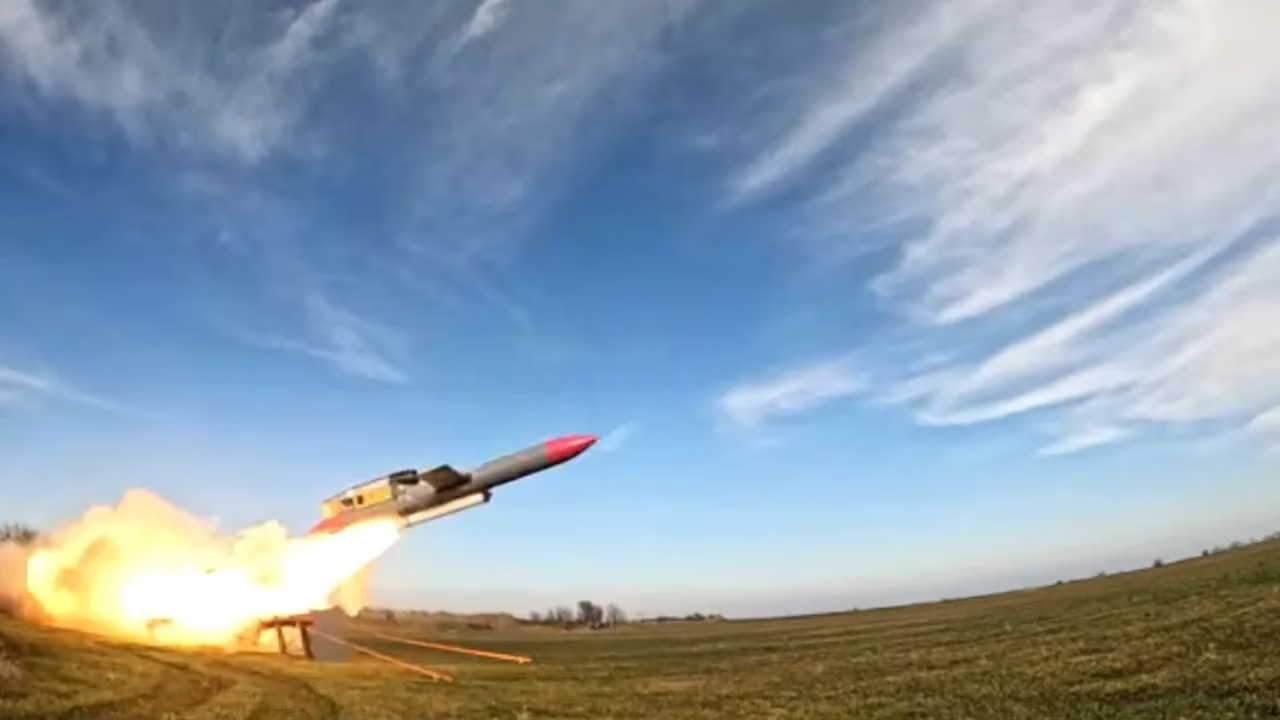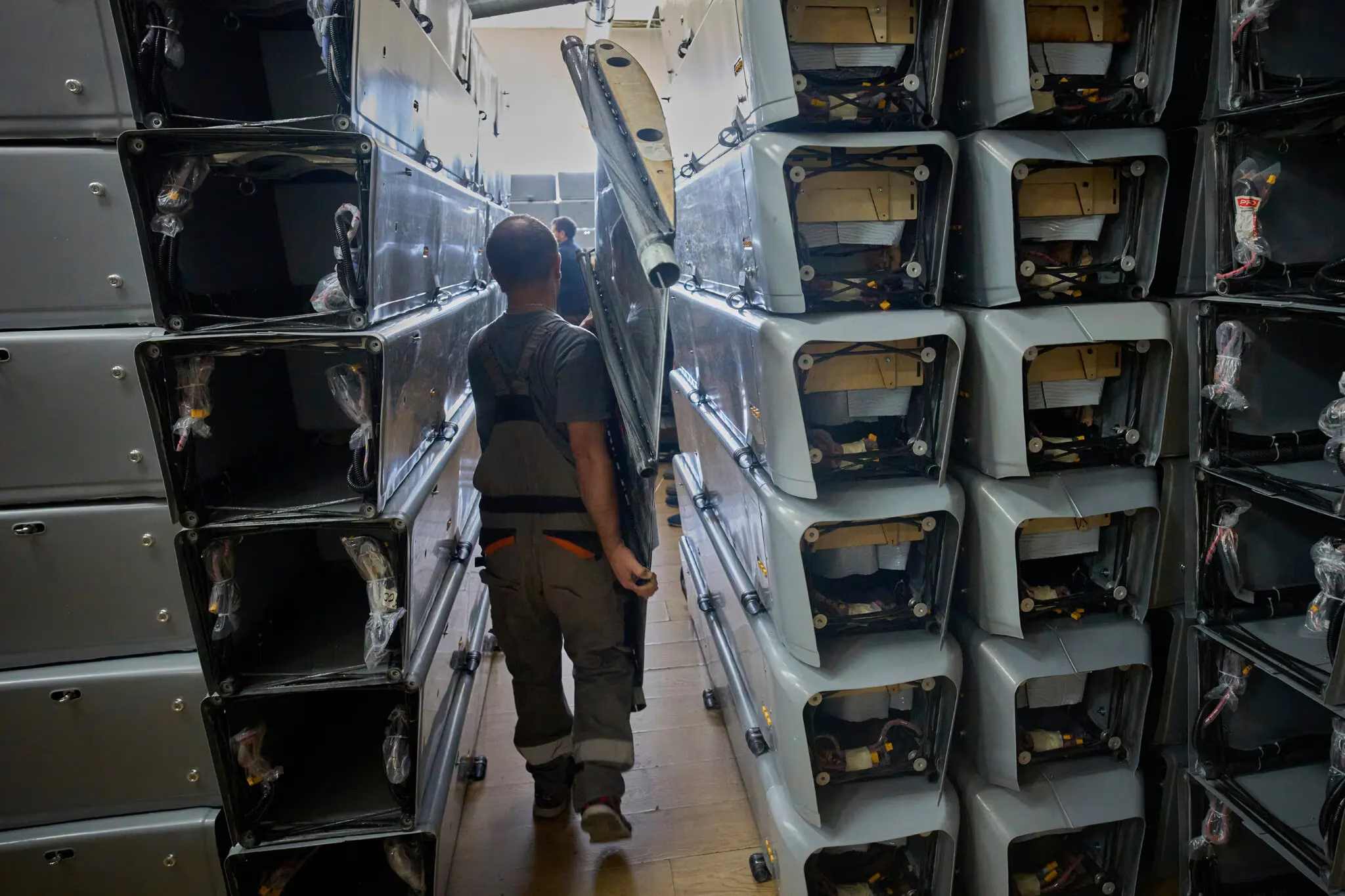Journalist Andrew Kramer, writing in The New York Times, tells the story of Fire Point—a Ukrainian company that grew from an underground workshop into one of the country’s largest drone manufacturers. Through the story of this startup, the paper explores how Ukraine’s new defense economy is producing not only technology and billions in contracts but also doubts—about who profits from war and where the line lies between ingenuity and corruption.
As The New York Times reports, many such workshops have evolved into full-fledged defense companies. Kyiv is now working to scale these initiatives to reduce dependence on foreign suppliers. Among the most prominent examples is Fire Point, which has become a symbol of the rapid expansion of Ukraine’s defense sector.
According to state registry data, at the start of Russia’s full-scale invasion in February 2022, the company—later renamed Fire Point—was officially listed as a casting agency for film and television. Its registered owner is Yehor Skalyha, while technical director Iryna Terekh previously headed a firm that produced concrete outdoor furniture.
Today, Fire Point is one of the Ukrainian army’s largest contractors. According to its management, this year the company’s contracts amount to about $1 billion. At roughly thirty secret sites across Ukraine, the firm assembles long-range explosive drones used in strikes on Russian oil refineries. The goal, notes The New York Times, is to inflict economic damage on Russia and strengthen Ukraine’s position in future negotiations.
Fire Point has also announced production of a larger drone called the Flamingo, which Kyiv hopes will enable deeper strikes inside Russian territory.
Fire Point’s success has been accompanied by controversy and allegations. Critics claim the firm secured contracts through political connections, while its management acknowledges receiving subpoenas as part of an anti-corruption investigation.
Most of Ukraine’s defense spending remains classified: billions of dollars are allocated to domestic manufacturers without public tenders. That lack of transparency worries analysts and anti-corruption activists, given the country’s history of graft in military procurement.
Fire Point emerged from Ukraine’s film industry, where President Volodymyr Zelensky once worked. The company’s owner had taken part in scouting locations for Zelensky’s 2016 romantic comedy Eight Best Dates, as well as for dozens of other film projects.
In August, The Kyiv Independent reported that Ukraine’s National Anti-Corruption Bureau was investigating possible links between Fire Point and businessman Timur Mindich, a co-owner of the television studio founded by Zelensky. As The New York Times noted, investigators are examining whether Mindich may profit from Fire Point as an undeclared owner. The company said that Mindich had indeed expressed interest in buying a stake but was turned down.

Ukraine Unveils the “Flamingo” Cruise Missile With a Claimed Range of 3,000 km, but Its Capabilities Raise Doubts
The Developer Is Under NABU Investigation Over Contracts for “Barely Functional” Drones

Zelensky Tries to Contain the NABU and SAP Scandal—But Public Trust in Ukraine Has Already Eroded
As Protests Enter Day Five, the Presidential Office Considers Sanctions Against the Owner of Ukrainska Pravda Over Corruption Reporting
Fire Point’s management says the company is cooperating with investigators and that the probe primarily concerns government officials. The National Anti-Corruption Bureau’s press office declined to comment.
The firm has also faced criticism over product quality. According to its detractors, Fire Point drones lag behind competitors in their ability to penetrate Russian air defenses. The independent Public Anticorruption Council has called on parliament to investigate issues of pricing and performance.
The company, for its part, insists that early problems have been resolved. Its main model, the FP-1, “reliably strikes Russian oil refineries, causing fires and chaos,” the management claims. These assertions cannot be independently verified.
Despite the criticism, drone makers like Fire Point are regarded in Ukraine as national heroes. Their ability to adapt civilian technology for military use has reshaped how defense analysts think about future wars.
As the industry grows, Ukrainian startups are drawing interest from investors and Western partners. This month, Norway and Ukraine announced the creation of a €20 million fund to finance joint drone projects.
“No one else in the world has this level of experience in unmanned missions,” The New York Times quoted Oleksandr Kamishin, adviser to the minister for strategic industries, as saying. He added that Ukraine should establish joint ventures with Western defense firms: “Europe and the U.S. need these drones.”
According to the Ministry of Strategic Industries, between 2022 and 2024, Ukraine has created 425 arms-manufacturing enterprises. The Brave 1 initiative under the Ministry of Digital Transformation estimates the total number of companies involved in weapons design and production at more than 2,000.
In the long-range strike drone sector alone—where companies like Fire Point operate—more than twenty competing firms are active, notes Ihor Fedyrko, director of the Defense Industry Council.

FP-1 resembles a miniature airplane: it is launched from a rocket booster, fitted with a two-stroke engine similar to those used in chainsaws, has a range of about 850 miles and carries a warhead of roughly 60 kilograms. Despite its inexpensive materials, the drone can strike a substantial portion of western Russia.
As The New York Times notes, the very concept of mass-deploying cheap drones traces back to Moscow's use of Iranian systems. The idea is that most will be intercepted, but some will reach their targets — and their low cost makes such losses acceptable.
According to Fire Point, their platforms account for up to 60% of Ukrainian strikes on Russian territory. Those attacks have placed a country long reliant on a Cold-War-era air-defence apparatus at daily risk.
Fire Point's contracts this year amount to roughly 10% of state defence procurement. An audit found that government agencies awarded contracts without the mandatory price negotiations, even though production costs may have been lower. The unit cost of the FP-1 was estimated at $58,000, yet contracts were signed for about $16.7 million more than the aggregate cost calculated at the lower price.
Company executives insist that, even at that price, the drones remain "far cheaper than cruise missiles costing more than a million dollars."
A former commander of a drone unit, Major Yuriy Kasyanov, says Fire Point won contracts despite design flaws, while his own project, Spear, received no support. He claims to have demonstrated an anti-jamming control system, detonating two drones a few metres from a flag above the Kremlin in 2023.
Kasyanov said he testified as a witness in the anti-corruption probe into Fire Point, after which his unit was disbanded.
Responding to criticism, 33-year-old Fire Point technical director Iryna Terekh said drone manufacturing is a new industry where cost-cutting often requires departing from traditional aviation standards.
In addition to the FP-1, the company is ramping up production of the Flamingo—a larger jet-powered drone with a range of up to 1,800 miles and a payload of about one ton. Former CIA Director David Petraeus has called the Flamingo a potential “turning point” in the war.
For now, the Flamingo’s effectiveness remains untested in large-scale operations. Even the origin of its name has become part of company lore: engineers reportedly painted one prototype pink because they had run out of red paint. According to another version, the hue appeared by accident, prompting someone to joke, “What’s the worst that could happen if a defence company is run by a woman? The weapons turn pink.”
